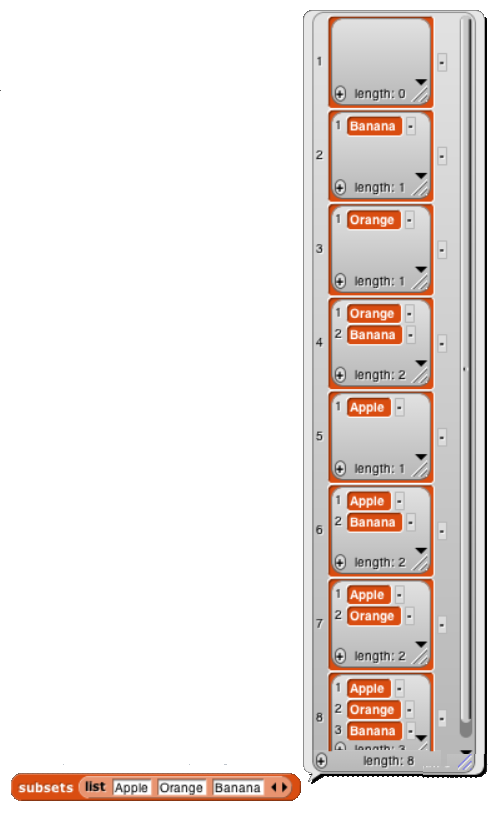
We want to list all the subsets of a given set.
A set is an unordered collection of unique things.
Unordered means that {Apple, Orange, Banana} is the same set as {Banana, Apple, Orange}.
Unique means that you can't have two of the same thing in a set. Officially, you can write {Apple, Orange, Apple, Banana} and it's the same set as in the previous paragraph, but we'll make the simplifying assumption that there will be no duplicates in the representation of a set.
We, of course, represent a set as a list of its elements, which is the official name for the things in a set. A list is an ordered sequence—you can meaningfully ask "what is the third item of this list?" But we'll agree that when using a list to represent a set, order doesn't count.
A subset of a set is a set all of whose elements are elements of the original set. So, starting with the set {Apple, Orange, Banana} we can find one-element subsets such as {Banana} and two-element subsets such as {Apple, Banana}. We also consider the original set {Apple, Orange, Banana} to be a subset of itself, and so is the empty set {} with no elements.
☞ Write down all the subsets of {Apple, Orange, Banana}. How many are there?
You're going to write the block subsets that takes a set (a list) as input, and reports a list of lists in which each item is a subset of the input list.

It doesn't matter in what order the subsets appear in the output list, but each subset must appear exactly once.
☞ If you prefer to solve puzzles without hints, write
subsetsnow. It's a bit harder than the other examples before this one.